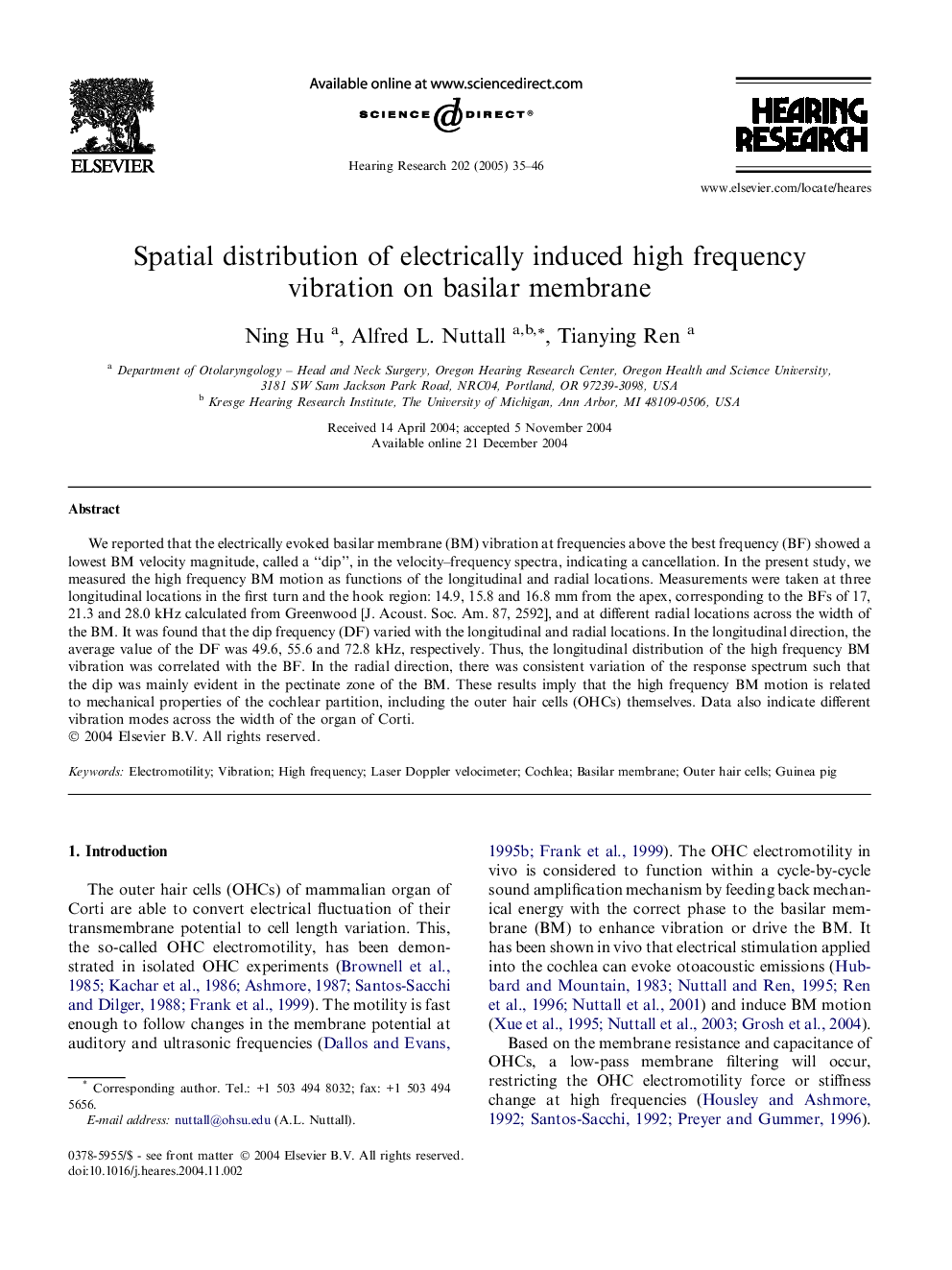| Article ID | Journal | Published Year | Pages | File Type |
|---|---|---|---|---|
| 9436562 | Hearing Research | 2005 | 12 Pages |
Abstract
We reported that the electrically evoked basilar membrane (BM) vibration at frequencies above the best frequency (BF) showed a lowest BM velocity magnitude, called a “dip”, in the velocity-frequency spectra, indicating a cancellation. In the present study, we measured the high frequency BM motion as functions of the longitudinal and radial locations. Measurements were taken at three longitudinal locations in the first turn and the hook region: 14.9, 15.8 and 16.8 mm from the apex, corresponding to the BFs of 17, 21.3 and 28.0 kHz calculated from Greenwood [J. Acoust. Soc. Am. 87, 2592], and at different radial locations across the width of the BM. It was found that the dip frequency (DF) varied with the longitudinal and radial locations. In the longitudinal direction, the average value of the DF was 49.6, 55.6 and 72.8 kHz, respectively. Thus, the longitudinal distribution of the high frequency BM vibration was correlated with the BF. In the radial direction, there was consistent variation of the response spectrum such that the dip was mainly evident in the pectinate zone of the BM. These results imply that the high frequency BM motion is related to mechanical properties of the cochlear partition, including the outer hair cells (OHCs) themselves. Data also indicate different vibration modes across the width of the organ of Corti.
Keywords
Related Topics
Life Sciences
Neuroscience
Sensory Systems
Authors
Ning Hu, Alfred L. Nuttall, Tianying Ren,
